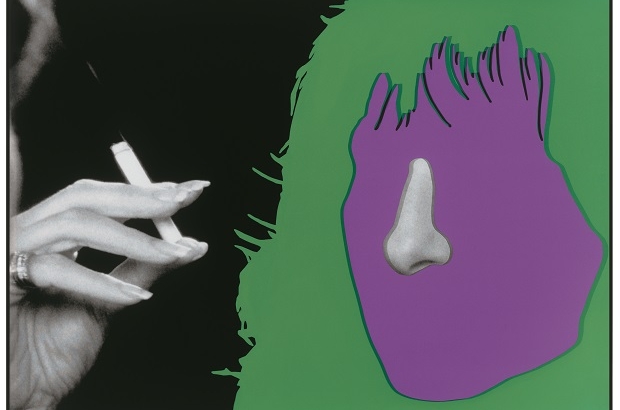- Daily & Weekly newsletters
- Buy & download The Bulletin
- Comment on our articles
A visionary eye: Conceptual art pioneer John Baldessari at Bozar
Not only was American artist John Baldessari a giant of a man standing over 2m tall, he was a towering figure in the world of contemporary art. The California native died in 2020 aged 88, a pivotal leader of conceptual art who influenced generations of postmodernist artists.
John Baldessari. Parables, Fables and Other Tall Stories is the first major posthumous exhibition of his work: a homage to the artist’s groundbreaking appropriation of images and text; a generous teacher’s experimental practices; and ultimately an irreverent wit that infused his life and visionary oeuvre.
Bozar’s retrospective is curated by three of Baldessari’s closest collaborators: David Platzker, Rita McBride and Bartomeu Marí. Deliberately providing minimum interpretation to the over 60 works on display, they have selected quotes by the artist to convey his spirit and constant search for new narratives while reshaping the understanding of what art can be. He notably wrote: “Invent artistic fables. Be a good teacher, like Jesus.” Focused on key stages of his career from 1966 to 2017, the show presents photographs, paintings, installations and videos that illustrate Baldessari’s storytelling in an immersive fashion.

Growing up close to the Mexican border and as the son of a Danish mother and an Italian-speaking Austrian father, Baldessari juggled multiple languages from an early age. It sparked a fascination for the complex and often contradictory relationship between words and images that persisted throughout his career.
He also maintained strong links with Europe and had a particular attachment for Brussels and Belgium. He exhibited in the capital and his work is present in a number of collections around the country. Belgium’s surrealists were one inspiration for his interplay between text and image.
Baldessari retained a strong pictorial quality throughout his oeuvre, yet he famously burned the majority of his canvases in 1966 as his career took a conceptual turn. It was documented, mainly through photographs, in his Cremation Project (1970) as he sought a new visual and playful language beyond paint.
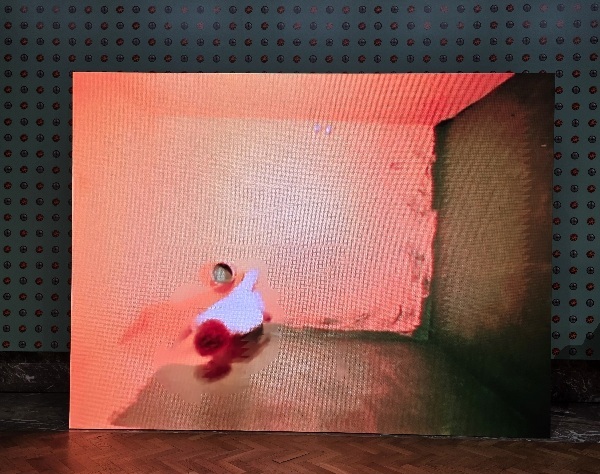
He embarked prolifically on photo-based series, including film, such as Six Colorful Inside Jobs (1977). From a bird's eye perspective, a lone figure paints the entire interior of an enclosed room in each of the primary and secondary colours, six times in six days, Monday to Saturday. It’s an invitation to “switch off” and experience first a certain boredom and then fascination, says Platzker, describing the action video as a homage to groundhog day.
This introductory area also introduces visitors to Baldessari’s comic colourful wallpaper designs that grace each corner of the 1,000m2 exhibition space. The seemingly idiosyncratic pairing of everyday objects, such as potatoes and lightbulbs or clocks and pizzas, are an amusing sidenote. Another welcome addition are the metal chairs scattered around the rooms, inviting the public to pause and reflect on the art works around them.
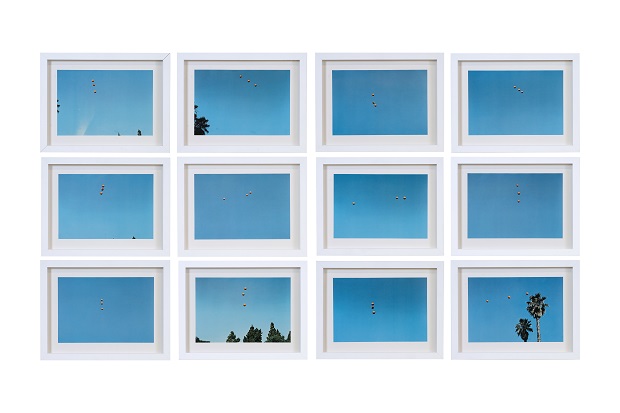
Among the artist’s photo explorations, axed around documentation, Throwing Three Balls in the Air to Get a Straight Line (Best of Thirty-Six Attempts), pictured above, is part of a series in which he photographed the objects hurled into the air to form geometric shapes before selecting the best from a single roll of film. The resulting images – set against brilliant azure skies – were also about framing his works, deciding “what to leave in and what to take out”.
From a classic grid system to the Kissing Series, in which the silhouette of a person grazes the edge of another image as if embracing. It highlights the space between things while exploring the tension created between different elements, as in Two Kisses: Drinking/Eating/Chaotic Situation/Sidewalk/Cactus. The inspiration for many of his works arose from exercises he set during decades of teaching at the California Institute of the Arts (CalArts).
In the later Prima Facie (Fourth State) series, images from film stills are juxtaposed with text; portraits of actors paired with words aiming to interpret their expressions. In some, the portrait is infused with a tinged colour and accorded the name of a paint colour. The title ‘first sight’ refers to the way people jump to conclusions.
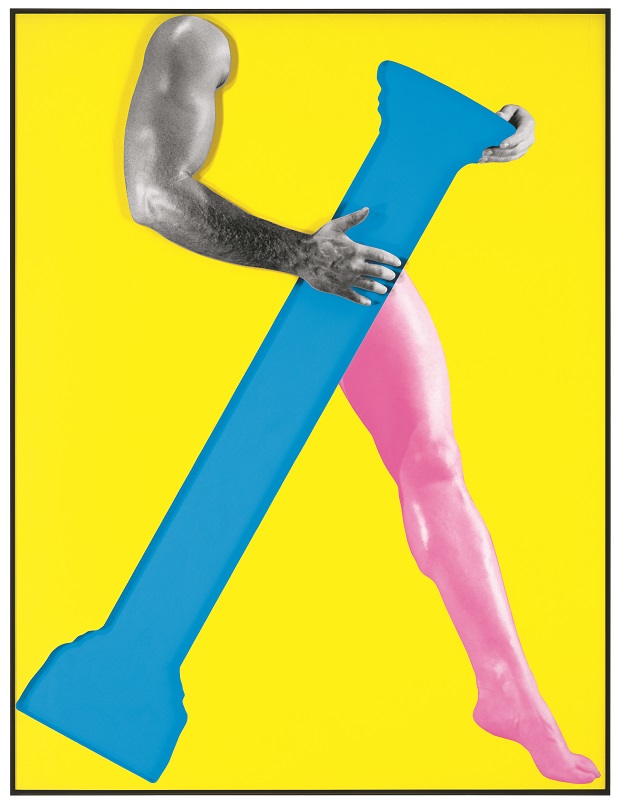
Baldessari’s simple shapes and colourful pop art appeal are evident in monumental works like Arms and Legs (Specific, Elbows & Knees), Etc, Part (One): Arm and Leg (With Column), pictured above. Isolating parts of the human body is a recurring thematic, in particular ears, noses and lips, as in the giant Ear Sofa; and Nose Sconces with Flowers, one of Baldessari’s rare sculptures. Again, the artist incessantly interrogates the way in which we view people and art. Another common thread, across numerous series, is the blanking out of faces with coloured dots. This signature technique distorts the habitual focus of the gaze on human figures.
The combination of images and words takes another form in The Tetrad Series (pictured below), where the artist selects a detail of reproductions by Spanish realist Francisco Goya, escaping the tyranny of the square to reframe his works. Numerous interpretations of their meaning are possible; their inclusion in the show a satisfying salute to the major exhibition on Goya to be staged at Bozar for Europalia Spain from October.
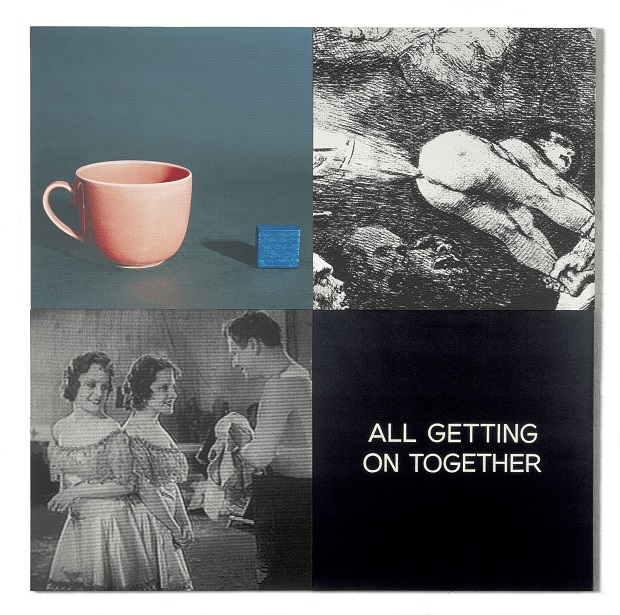
Baldessari references artistic figures from the ages in his inkjet print series Double Vision, in this case, Marcel Duchamp. In the final room, the artist returns to simple black-and-white images in the Goya Series, which demonstrate his fascination for the Spanish master. “In this new work I use the titles, or I invent Goyaesque titles and pair them with photographs I have taken. When the combination works best, neither photo nor title is prioritized, they are equally important and there is a moment of synthesis and equilibrium,” noted Baldessari.
While infamously telling students to write repeatedly “I will not make boring art”, Baldessari himself succeeded in creating an influential and bold body of work that exploded the codes of cultural communication. By appropriating media from popular culture to question the relationship between image and language, he was a precursor of digital art. If the notion of conceptual art appears potentially austere, this affectionately-curated show defiantly and joyfully overturns that perception.
John Baldessari. Parables, Fables and Other Tall Stories
Until 1 February
Bozar
Rue Ravenstein 23
Brussels
Photos: (main image) ©Noses and Ears (Part One): Hand Holding Cigarette and Head (with Nose) ©John Baldessari 2006, courtesy Estate and Family Foundation of John Baldessari, Sprüth Magers, Private Collection, Lisbon, Portugal; John Baldessari 2008 ©courtesy the Baldessari Estate and Family Foundation; Six Colorful Inside Jobs (1977); Throwing Three Balls in the Air to Get a Straight Line (Best of Thirty-Six Attempts) ©John Baldessari 1973, courtesy Estate and Family Foundation of John Baldessari, Sprüth Magers, Craig Robins Collection, Miami; Arms and Legs (Specif, Elbows & Knees) etc, Part (One): Arm and Leg (With Column) ©John Baldessari 2007, courtesy Estate and Family Foundation of John Baldessari, Sprüth Magers, Würth Collection Germany; Tetrad Series: All getting on Together ©John Baldessari 1999, courtesy Estate and Family Foundation of John Baldessari, Sprüth Magers; Herbert Collection, Ghent












